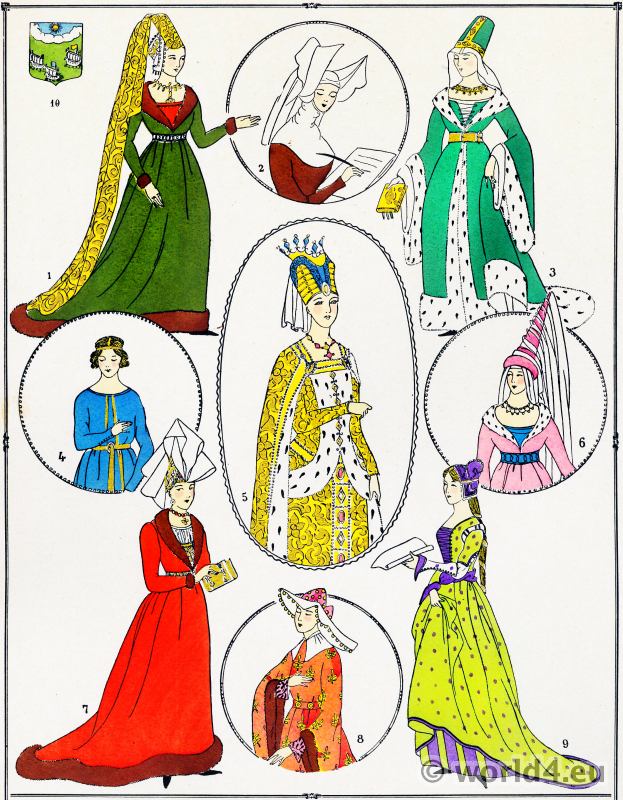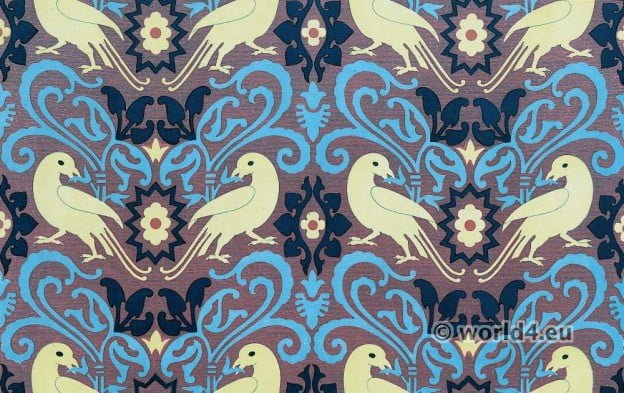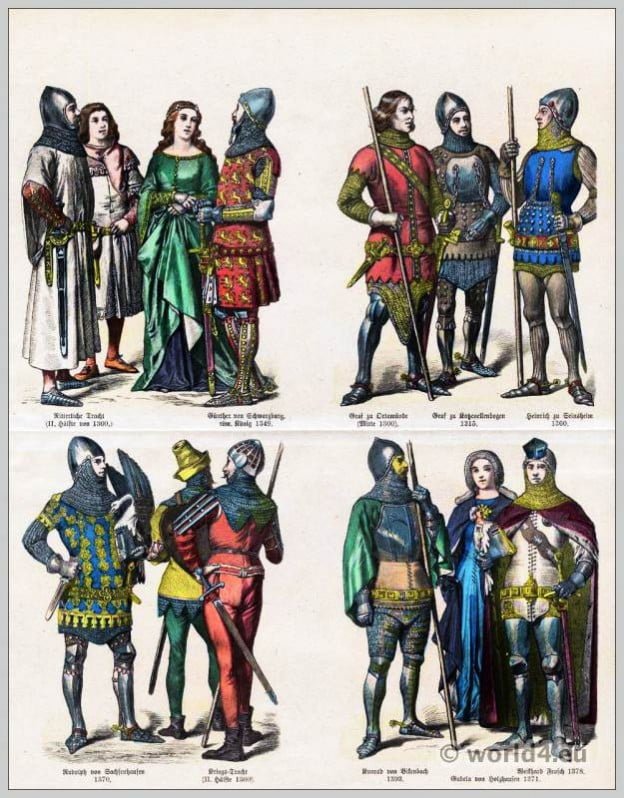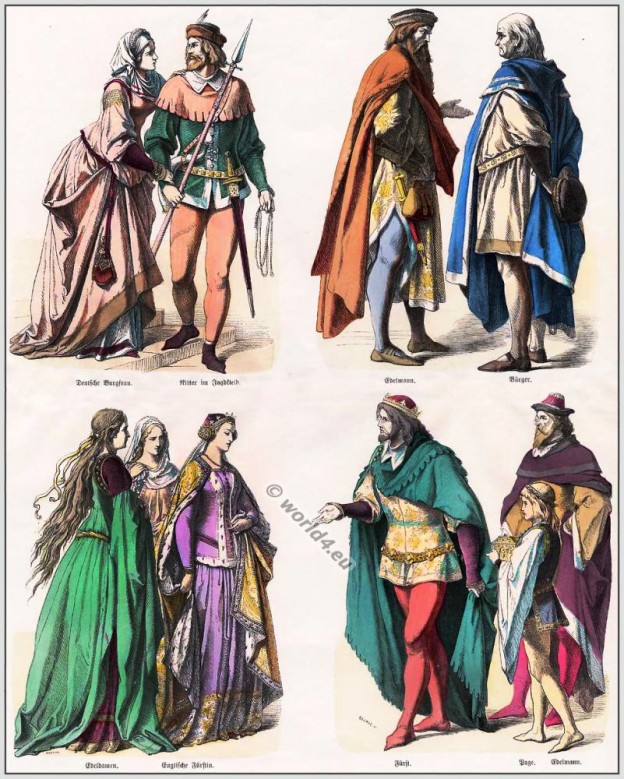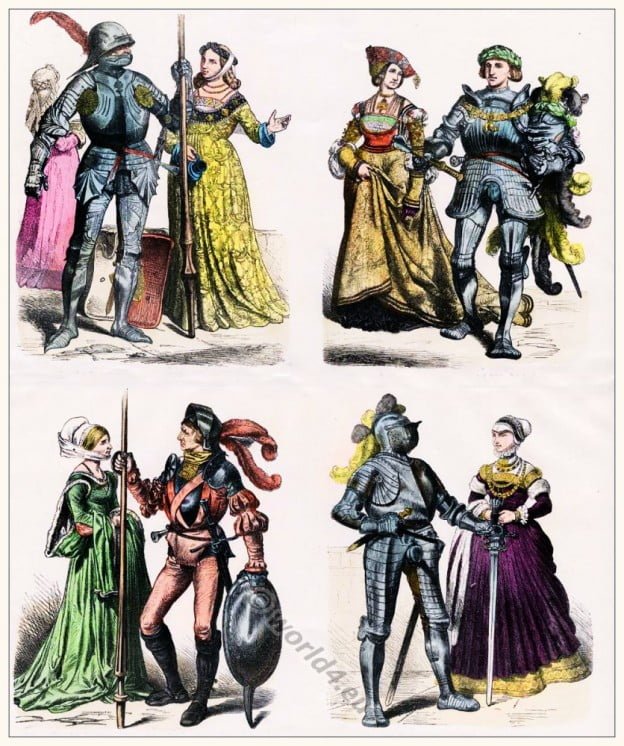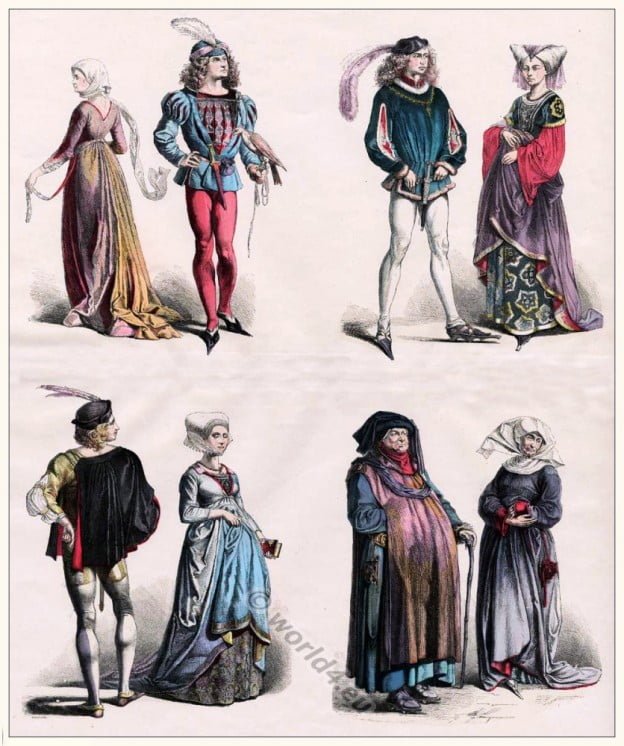L’histoire du costume féminin français. Les modes du Moyen Age, de l’an 1037 à l’an 1461. Robes. Cotte hardie, Houppelande avec chaperon, Femme élégante sous Charles VIII, Pelicon, Renaud de Saint Vincent,
Tag: Burgundian fashion period
Burgundian fashion period between 1350-1500. In the 15th century the Duchy of Burgundy was the leader in the European fashion. Characteristic of the Burgundian women’s fashion at the end of the Middle Ages, as part of the epoch of Gothic, was the very form-fitting clothes, with long trailing skirt and tight laced bodice. The waist ended under the deep cutout, which was bordered by a belt. The head covering for women is an acute or obtuse cone, from which a long veil called Flinder hangs down. Under the term hennin, evolved in a short time a number of different forms and variations. The medieval toed shoes were long and the clothes were playful and detailed. Men decorated their clothes with many small clamps, sleeves were decorated with small piece of cloth, called Zaddeln. Known from the Middle Ages Mi-parti, took on a new bloom. In this case the clothes got two different colors. Hairline and eyebrows were plucked to achieve a high forehead. The white, flawless skin was a sign of beauty.
Elegance. Fashion in the Middle Ages. French women’s costumes.
The Elegance of French women’s costumes. Fashion in the Middle Ages, from 1037 to 1461.
Flemish School. Fragment of a Tapestry. 15th c.
Altar frontal from the tapestry representing Beatrix`s marriage.
Medieval clothing in France. 11th to 13th century.
In France, as in Germany, the dress of the eleventh century was a development from the fashions of previous periods, though here the change was accomplished more quickly.
German Medieval dresses in the 14th Century.
German Medieval dresses 14th Century.
Italian fashion history of the 14th and 15th century.
In the fifteenth century Italian dress exhibited the same variety as that of France, England, and Germany. In Italy, as in other countries, numerous enactments were promulgated with the object of restraining the ever-increasing luxury in attire, but these were just as unsuccessful in Italy as elsewhere.
English and German medieval clothing in the 14th Century.
English and German medieval clothing in the 14th Century. Top row left: Clothing of a German Castle woman and a knight in hunting dress. Right: Clothes German nobleman and citizens.Bottom… Read More
German fashions of the 14th century.
German fashions during the fourteenth century. The dress in Germany underwent the same transformation as in France.
German knights and nobel women 15th Century.
German knights and nobel women German fashion in the XV. and XVI. Century. Upper half of the image on the left: German knights and wife 1450. Right: German Prince and Princess… Read More
German patrician, French court dresses 15th century.
German patricians, French court dresses 15th century. Above: French court dresses. Below: German patrician. “On the history of costumes”. Münchener Bilderbogen (Munich pictures sheets). Published by Braun & Schneider, Munich c.1858 -1898s.


